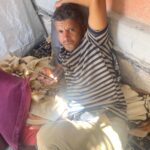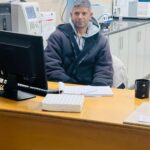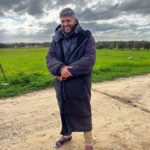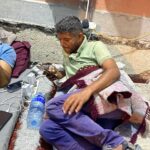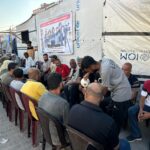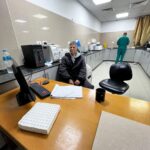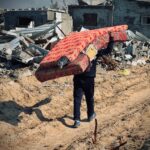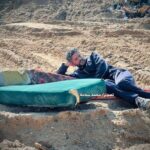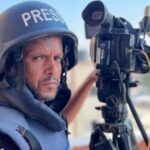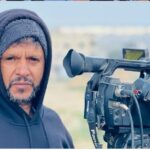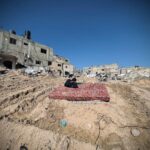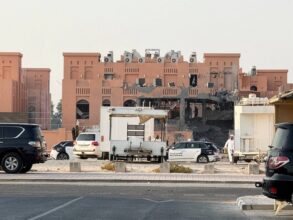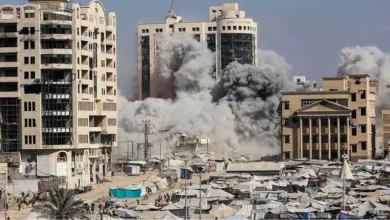Hossam al‑Masri, the camera martyr who turned his lens into a window on Gaza’s suffering
Al-Khamisa News Network - Gaza
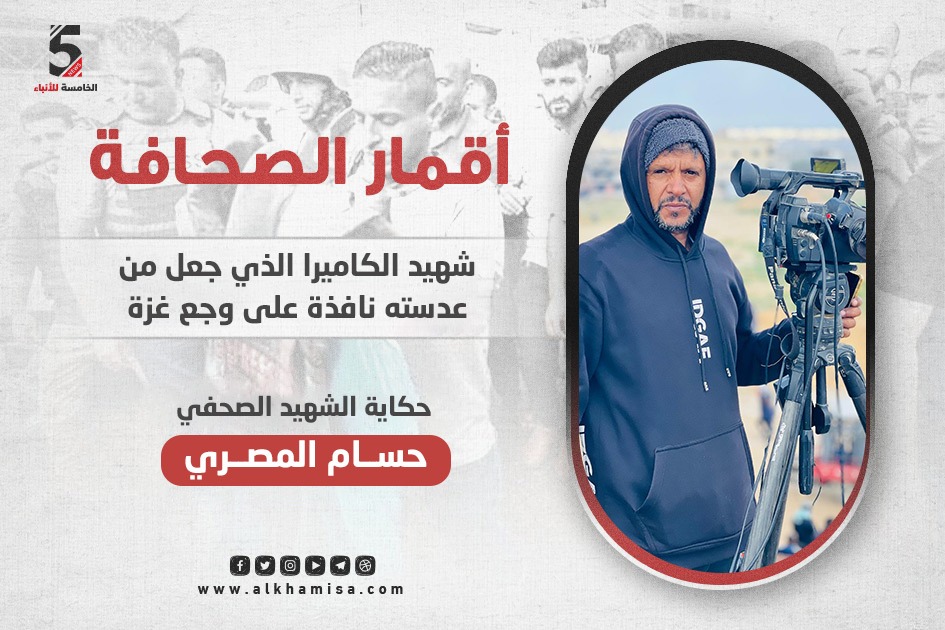
Hussam al-Masri.. Press Satellites Prepared by: Amina Ghanam
In a scene that encapsulates the plight of image-makers and free speech under the fire of the assault, journalist Hussam Atiya al-Masri was killed, after his lens had become a window for the world onto the humanitarian tragedy in Gaza.
The late Hussam Atiya al-Masri was born on February 25, 1976, and grew up in the Al-Muaskar area of Khan Younis in the south of the Gaza Strip, where he completed his primary and preparatory education before joining the electrical department at the UNRWA vocational school due to his interest in technical education.
He began his photography career in 1993, documenting festivals and celebrations alongside his work as a media worker. His older brother, Ezzedine al-Masri, was the first to support him in this field; they worked together at the Amjad Media Foundation, where he learned photography and editing from him.
Hussam later obtained a diploma in journalism, and began working freelance from 1998 with Palestinian institutions, most notably the Palestinian Broadcasting Corporation. He joined Reuters as a contractor in May 2024.
He specialized in live broadcasts from around the Nasser Medical Complex, and his camera covered humanitarian aid, malnutrition and displacement in the southern Gaza Strip, making him a witness to the details of the suffering.
Hussam came from a prominent Palestinian family in the field of media and documentary photography; his brothers preceded him on this path, and even his children followed in his footsteps, carrying the camera as their father did: a tool of truth, and a testimony to what must not be forgotten.
Brother and Friend
Hussam al-Masri was an example of dedication to his work, as his brother Ezzedine describes him, who said: “Despite all the risks, Hussam held on to his camera until the last moment, to show the world the crimes and violations taking place in Gaza.”
Ezzedine added in an interview with Al-Khamisa: “Hussam began photographing at an early age, and because of my work at the Amjad Foundation he was my right-hand man. He learned editing quickly and became a central pillar of our media work“.
Recalling their memories together, he said: “Since 1993 I never saw him without his camera, even at family events — his work was always a top priority. When Israeli forces swept into Khan Younis in December 2023, he refused to leave and remained at the Nasser Medical Complex until the city was declared clear of civilians and journalists“.
Hussam was deeply affected by the death of his colleague Mohammed Abu Hatab, who had worked with him for a long time, and the repeated scenes of him saying farewell to colleagues left a profound mark on him. Yet he insisted on continuing his mission, defying all dangers to convey the full picture.
Despite his busy fieldwork, Hussam never neglected his family duties. Until his final days he sought a medical referral for his wife, who had psoriasis that developed into skin cancer amid a shortage of medicines in Gaza. He moved around seeking treatment for her while also securing flour and food for his family as a father of four amid the famine sweeping the Gaza Strip.
The Deadly Shelling
Ezzedine recounts the moment his brother Hussam was killed, saying:
“I was preparing to leave our tent, which is about 300 meters from the Nasser complex, when the Israeli forces fired the first shell. I felt anxious and tense, then I received a call from colleagues asking about my location. I asked them about Hussam, and they told me: ‘Hurry to the hospital.’ At that point I realized something serious had happened and that Hussam had either been wounded or killed“.
Ezzedine rushed to the hospital, but before he arrived the hospital was hit by another strike, causing the deaths of other journalists and civil defense crews.
When he arrived, he did not find his brother’s body in the morgue, so he began searching among the dead and wounded, even in intensive care wards. He then went back up to the floor that had been struck, only to later discover that medics had placed Hussam’s body on a lower floor because of the extreme overcrowding of the dead, wounded and debris.
The Palestinian Journalist… Between Being Targeted and the World’s Silence
Photographer and journalist Ezzedine al-Masri believes that Israeli forces, after failing to silence the Palestinian narrative, resorted to targeting those who convey it by fabricating accounts and spreading falsehoods.
He adds: “Whenever their involvement in killing journalists is proven, they concoct an explanation, because they believe they can escape accountability, shielded by the support of major powers such as the United States, which provides them political and media cover“.
He continues: “The greater crime is that some Israeli media figures lead campaigns to smear and incite against the Palestinian journalist, appearing on screens with weapons, boasting about the destruction, while the voices of rights organizations — which should defend journalists and investigate attacks on them — are absent”.
He insists that the Israeli military has disregarded international legitimacy, flouting all humanitarian and professional standards, and that reporting the truth in Palestine has become more than a profession — it is a legacy passed from generation to generation.
In the farewell to the late Hussam al-Masri, that legacy was embodied when his brother handed his camera to his youngest son, “Ahmed”, so he could continue the path of words, images and resistance.
The Occupation’s Account… A Documented Crime Left Without Accountability
In the Israeli strike that hit the Nasser Medical Complex, around twenty people were killed, including five journalists: Hussam al-Masri, Mohammed Salama, Mariam Abu Daqa, Muath Abu Taha, and Ahmed Abu Aziz.
They were directly targeted with their cameras and broadcasting and sound equipment, their tools mingling with their blood, remaining witnesses to a crime that was complete in its elements, carried out live and before the eyes of the world.
The Israeli military claimed it struck a “Hamas surveillance camera” near the hospital, denying that it targeted journalists, while Prime Minister Benjamin Netanyahu called the incident a “tragic mistake.” Although a preliminary military investigation was announced, its fate, like many investigations into attacks on journalists — from Shireen Abu Akleh to dozens more — remains unresolved and suspended indefinitely.
But the Palestinian journalist, standing steadfast behind or in front of the camera, remains committed to conveying the truth, believing in his mission because he is a son of the land and the cause.
Armed with words and images, he confronts the Israeli war machine without retreat.



